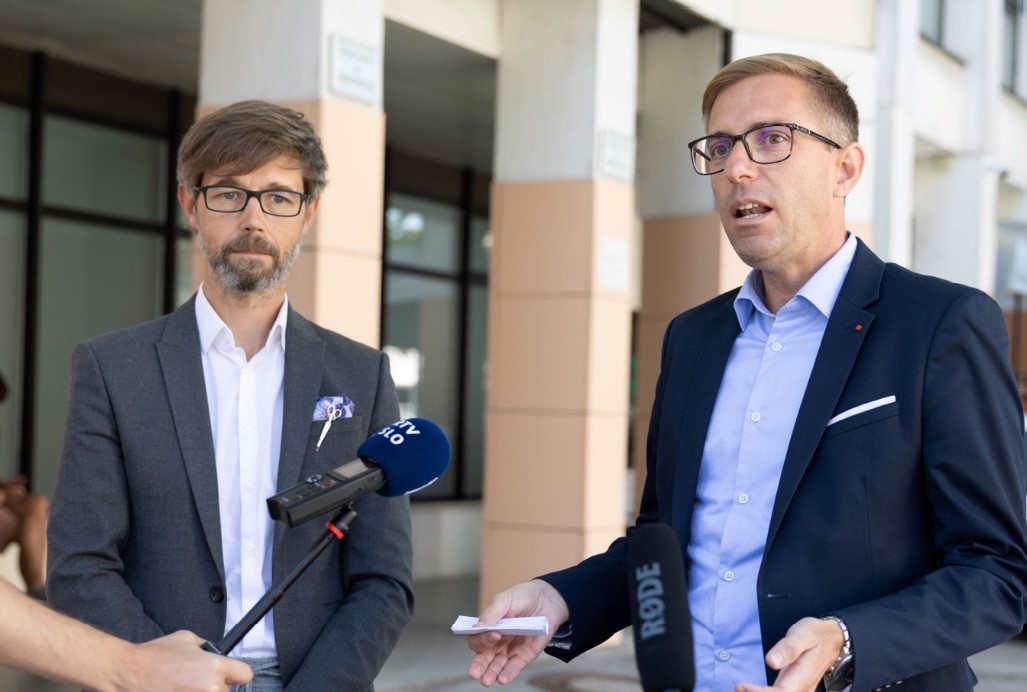By: Žiga Korsika (Nova24tv.si)
Thursday, the 7th of September 2023, marked the deadline for applications to the call for proposals for the co-financing of the development of non-governmental organisations. The call was and remains controversial, as it earmarks millions for the development of NGOs in the post-flood period. The money would have been much more wisely spent on repairing the damage caused by the recent floods. At the same time, the text of the public tender reveals how the funding of public opinion-makers is handled.
When we asked the Minister of Public Administration about the intention to redirect funds for the development of NGOs to flood recovery, we received the following reply: “We will not cancel the public tender in question – on the contrary, there is an urgent need to strengthen NGOs and voluntary organisations in all Slovenian regions.” They also wrote that in the coming period, NGOs will also play an important role “in helping people on the ground and in repairing the damage caused by the recent floods. The Supporting Environment call also addresses the volunteer network, and the contribution of volunteers is invaluable in such exceptional situations, as demonstrated in recent days by humanitarian organisations, all of which are also NGOs.”
But as we have revealed in previous articles, volunteering is only a peripheral objective of the call for proposals. The funds will be awarded primarily for the purpose of bringing the government and NGO sectors even closer together, strengthening the political role of NGOs and increasing their visibility in our society. The call has three thematic strands. Strand A will finance a horizontal network of NGOs, Strand B will co-finance twelve regional hubs and co-finance a network for volunteering.
Increasing the digital reach of NGOs
But let us first explain what horizontal networks or regional hubs actually are. They are defined by the Non-Governmental Organisations Act. They are NGOs that bring together a number of different NGOs. Horizontal networks bring together NGOs at the national level, while regional hubs bring together NGOs at the regional level, as defined by law. An example of a horizontal network is the Centre for Information, Cooperation and Development of Non-Governmental Organisations – CNVOS, headed by Goran Forbici, the new President of the Council of the national media outlet, RTV Slovenia. An example of regional organisations is available HERE – in Slovenian.
The tender documents for all three strands set out specific objectives and criteria, based on which the Ministry will be able to judge whether NGOs have met its expectations. Almost all strands have an increase in public footprint listed among the expected results. For Strand B, the expected result is listed as “targeted NGOs – opportunities identified to address local needs and carry out advocacy at the local/regional level,” and the impact indicator is “number of subscribers and followers maintained or increased per media used by the organisation in terms of information on local/regional or national opportunities to address societal challenges/needs and carry out advocacy.” NGOs will need to demonstrate that they have reached a greater number of people through online tools. They will need to provide “Extract user data using verification tools (e.g. Google Analytics). Need to indicate baseline and end line.” Strands A and C use similar wording.
Funding of political actions
What is particularly interesting is the way in which the verification and financing of political campaigns will be carried out. Strand B under point 4 states that the expected result is: “Effective and efficient advocacy process implemented to achieve necessary changes in local/regional policies to address community needs,” and as an impact indicator, “Number of advocacy processes implemented for policy change (i.e. change in regulations and current approaches in practice) at local and regional level by selected municipalities.” Strands A and C use similar wording.
The full documentation is available HERE – in Slovenian.
Why NGOs are too tired when the left is in power
This is how the outlines of NGO funding are emerging. The state finances the increase of their public outreach and creates an environment in which NGOs compete on how many different regulations or procedures have been changed as a result of their activities. In this kind of environment, NGOs are, at best, transformed into extensions of the authorities, or into a kind of government agency for the creation and consolidation of public opinion. Criticism of the authorities is simply not in the interest of organisations relying on state funding. At worst, we find that many of the NGOs have been this in name only, having been set up from the outset as an extension of political parties or (left-wing) specific political options.
This also explains why NGOs fill the centre of Ljubljana when the right-wing political option is in power, and why they disappear when the left regains power. As Filip Dobranič, a well-known NGO activist, explained, they are simply too tired then and have to be careful not to “burn out”.
We will write more about how the proliferation of NGOs has started to distort the democratic process at another time.

